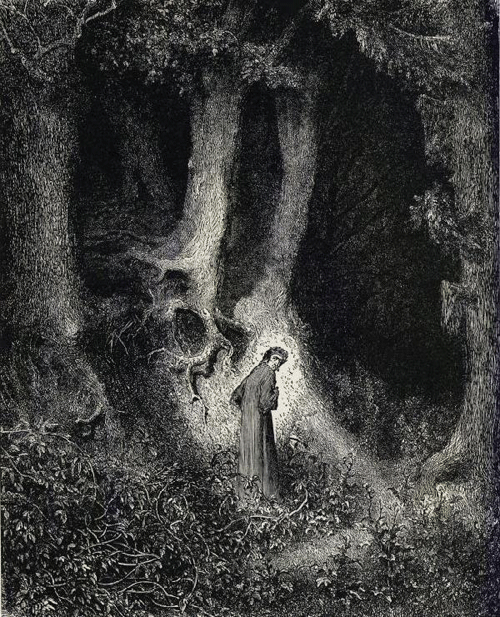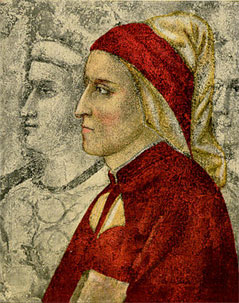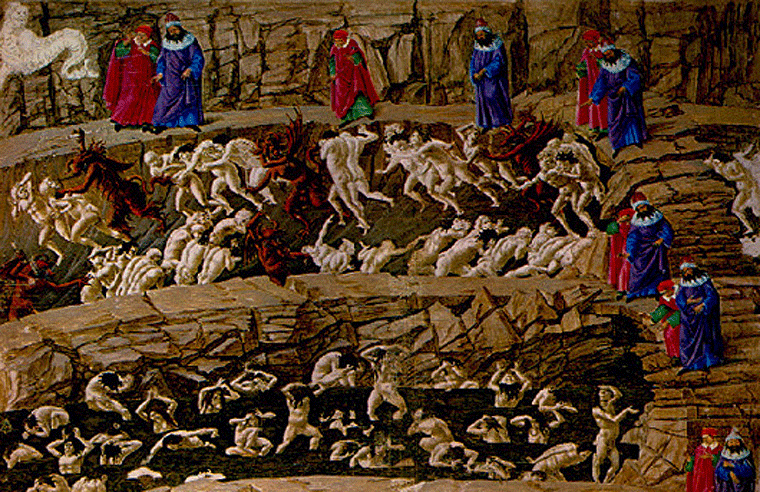
The Hotel Casino de la Selva stands on a slightly higher hill just outside the town, near the railway station. – UTV, 9.
Lowry points out in "Letter to Jonathan Cape" that "Selva means wood and this strikes the opening chord of the Inferno." Dante's poem The Divine Comedy, comprising the Inferno, Purgatorio and Paradiso, describes the journey taken by the poet through these regions, culminating with his vision of the eternal. The Inferno is Dante's description of hell, conceived as successive circles to which various categories of sinners are consigned and through which Dante is guided by Virgil.
Lowry envisaged UTV as part of a greater whole, The Voyage That Never Ends, a kind of drunken Divine Comedy in which this novel was to be equivalent to the Inferno. His plan did not materialise, but the general analogies with the Inferno are important.
–Nel mezzo del bloody cammin di nostra vita mi ritrovai in ... Hugh flung himself down on the porch daybed. – UTV, 154.
(It. "In the middle of the bloody road of our life I found myself in"): the opening lines of the Inferno. Lowry invariably quoted the line with "in" rather than the correct per.
Though Hugh is only twenty-nine (the phrase normally indicates thirty-five, Dante's age at the time of writing, and the average age of the Consul and Hugh), he finds himself very much at the mid-point of his life, seeking the path that will give him meaning and direction.
Above: Dante Astray in the Dark Wood, Paul Gustave Doré (1861)

Suddenly from outside, a bell spoke out, then ceased abruptly : dolente ... dolore! – UTV, 47.
The words dolente ... dolore are taken from the inscription above the entrance into Hell, in the Inferno, III.I-1: "Per me si va nella citta dolente / Per me si va nell'etterna dolore" ("Through me you enter the woeful city, / through me you enter eternal grief.")

In the Inferno, the Malebolge (It. "evil ditches") is the name given to the eighth circle of hell, consisting of ten cirular trenches, or bolge, in which are placed seducers, panderers, flatterers, simoniacs, sorcerers, barrators, hypocrites, theives, sowers of discord, and falsifiers (likened by Hugh to journalists), each of whom is meted out as appropriate affliction.
Above: The first two furrows of Malebolge (pimps, seducers and flatterers) depicted in a narrative painting by Sandro Botticelli (detail) (1506).